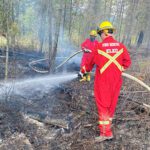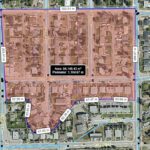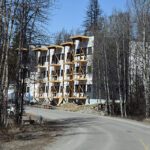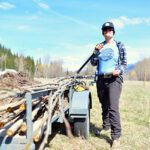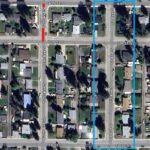Home »

Crossroads abattoir proposal clears major hurdle
The establishment of an abattoir near the Invermere crossroads took a step forward May 3 when the Regional District of East Kootenay (RDEK) board of directors voted against the weight of public sentiment and the wishes of the local director.
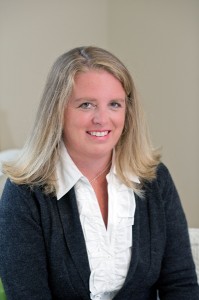
The board did not arrive at its decision, to pass the third reading of Bylaw No. 2448, easily. An intensive debate preceded the vote, with Electoral Area F director Wendy Booth stating she would vote against it because of the opposition she has heard.
The bylaw is intended to amend the RDEK Upper Columbia Valley Zoning Bylaw No. 900, 1992, to add “abattoir” as a permitted use for the Windermere District Farmers’ Institute (WDFI) property located southwest of the Invermere crossroads.
“A large number of people are against this. The commercial properties in the area have all spoken against this,” Booth told board members. “We heard pretty loud and clear” from neighbouring property owners, she added.
“Every single neighbour is opposed to it,” Booth stressed, noting they’re opposed to the proposed location but not the concept of an abattoir.
An April 24 public hearing and letters received by the regional government back up that view, Booth said, pointing out that 183 people attended the hearing at the Windermere Community Hall. While the speakers at the hearing showed a split in community support, with 11 of the 23 speakers opposed and 12 in support the RDEK has received 178 letters, with 103 stating opposition, 67 in support and eight uncertain.

Among the concerns expressed by residents in the area are: sewage/waste disposal; smell; increase in insects; noise; fear of growth of the facility (which will be about 1,000 square feet in size); water usage; and tourists’ perceptions.
Speaking at the hearing, Black Forest Restaurant owner Nicolaas Veen said, “It is clear there is a need for this facility but the concern is the location. It’s about perception for tourists.”
Indian Beach Estates resident David Pettigrew agreed that the majority of residents see the need for an abattoir but the proposed location would only harm tourism.
“Tourism is more important and the valley won’t survive without it. Other businesses won’t last without tourism. How can it be proposed in the middle of a playground within 750 metres of two championship golf courses, the Chamber of Commerce, across from a restaurant and Copper Point Resort. Do we tell people to ‘go to the abattoir and turn right’?”
Veterinarian Dr. Robert Fenimore told the large gathering he believes the issue has been blown out of control.
“I have lived in the area for 40 years and this valley was built on agriculture and has thrived on it. I have witnessed a steady degradation but there’s a new shift to learn about food sources and if the food supply line was cut off for three days, we’d be in trouble. Young people want to grow livestock here now. We need to talk to the accumulated knowledge with farmers as the base. There is 100 years of wisdom there. We need this abattoir and I would have no problem living next door to it. Fear has caught on and this is blown out of proportion. We need this for food security,” he stated.
Local ranchers stated the establishment of an abattoir would give their sagging industry a boost.
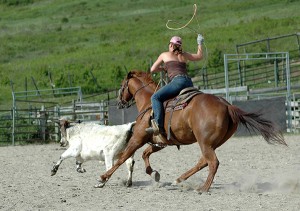
Rancher Brian McKersey said the facility would be licenced and inspected with strict regulations covering cleanliness and odors. “With BSE we went from shipping open cows at $700-$800 per head down to $100 per head. We have to have an abattoir. With a local butcher we used to get $1,100 per animal, which provides lots of room for profit,” he said.
Rancher John Zehnder noted the proposed abattoir would be set back from the highway by about 400 metres and animals won’t be visible.
“It’s the idea people are against, not the actual building. Our calculations show that the water consumption of this facility will be equal to a household with four people. We are required to call the landfill prior to transporting waste and they dig a hole and then bury the waste immediately. There is a disconnect as to where people get their food from and society needs to improve that,” he said.
Long-time Brisco rancher Hedi Trescher read a letter into the hearing record.
She stated that farming has never been an easy way to make a living but “new meat regulations that prohibit the sale of meat not slaughtered in an inspected abattoir has seriously impacted the ability of ranchers to do some creative marketing and sell value-added products directly to the consumer.
“Its impact has been especially hard on the small producers. As your drive the length of the valley, you now can see more and more acreages that are non-productive and uncared for. Our area is very well-suited to livestock production, but acreages that are in the ALR (Agricultural Land Reserve) and should be used for food production stand idle,” she said, adding, “Our abattoir would go a long way to revive the once vibrant livestock industry in the valley.”
The WDFI is proposing to build an estimated $400,000 facility, which will be, thanks to amendments put forward by District of Invermere Mayor Gerry Taft before the vote on the third reading, set back a minimum of 280 metres, have a maximum 1,700 square foot building allowance and a maximum limit of 10 animals.
Prior to voting, regional directors aired their views on the abattoir.
“Having an abattoir in Invermere is important for agriculture in the valley,” suggested City of Cranbrook Mayor Wayne Stetski.
“It will encourage economic development,” said Village of Canal Flats Mayor Ute Juras, adding she believes the WDFI didn’t do a good job of communicating with neighbouring property owners to try and ease fears of the facility.
Electoral Area G director Gerry Wilkie said he hears two main concerns: smell and visibility. And those concerns are easily rectified.
“For 40 years, within about 300 metres of the existing site” the WDFI has kept numbers of horses, he said, adding, “There has never been concerns about the smell of those animals.”
Wilkie said he believes much of the opposition is “a NIMBY (not in my back yard) thing.”
Juras agreed. “I don’t buy this smell thing,” she said.
Electoral Area A director Mike Sosnowski said the board needed to “step up” and show leadership.
“Time is always money. There are many reasons for it to move forward. I wish it was happening in my area,” he said, adding, “I’ve worked in an abattoir. Inside it doesn’t smell too good, but outside… basically there is not that much smell.”
Electoral Area B director Heath Slee concurred. “I’d like to see more of these in all our small towns,” he said.
Taft argued the WDFI land is zoned accordingly and the land is in the ALR.
“The permitted uses are allowed right now,” he said, suggesting the land could be used as a pig farm.
“The site itself – although the frontage is near the highway, it would be very far set back. They own 20 acres; there is a lot of land there,” he said, noting he doesn’t believe the building will be an eyesore.
“Once it’s built, no one will even notice it is there,” Taft said, adding he agreed with Juras that the WDFI didn’t do a good job in terms of presenting information to the public.
Taft also refuted claims by some people that the issue came out of nowhere.
The WDFI’s abattoir proposal has been on the books for three years and despite “numerous newspaper articles” some people still claim to be surprised or complain about being surprised, he said.
“No matter where they go – there will be neighbours. If they had to buy the land, this project is dead. And it’s still not a guarantee this will be built,” he cautioned.
District of Elkford Mayor Dean McKerracher and District of Sparwood Mayor Lois Halko also voted against the bylaw reading.
Ian Cobb/e-KNOW
